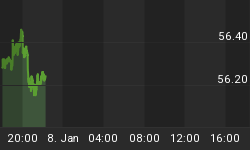The following is part of Pivotal Events that was published for our subscribers December 8, 2016.
Signs of The Times
"U.S. home prices have climbed back above the record reached more than a decade ago."
- Wall Street Journal, November 29.
"After a years-long boom in lending, signs of trouble are popping up in auto loans."
- Wall Street Journal, November 29.
"Regulators are airing 'significant concerns' about the millions of Americans who are falling behind on their payments."
- The New York Times, December 1.
"Investors are buying up riskier corporate debt in a bet that US economic expansion will accelerate, due to Trump."
- Financial Times, November 30.
"Goldman Says Trump's Presidency Will Benefit Stocks in Almost Every Sector"
- Bloomberg, November 30.
"Fed's Evans: 'We are on the cusp of a period of rising interest rates'."
- Business Insider, December 5.
Perspective
The intriguing headline is about the central banker observing that the market is on the "cusp" of a rise in interest rates. Following the exceptional technical excesses clocked in June, long rates have been rising. Also since then, short rates such as Libor have also been increasing.
Perhaps, the official is indicating that the Fed has no alternative but to follow the increase in market rates with an increase in the administered rate. No surprises, as typically the Fed follows the market by many months. Also, most government institutions will be hostile to Trump. The Fed could raise rates to "get even".
Too many commentators out there still believe that the market rise is discounting the Fed change. Pathetic. It's been forcing the Fed's hand.
When the market reversed, we did not bother to provide a rational. Rates would just go up. In retrospect, it's been associated with a turn to positive attitudes. Which in turn includes the electoral win by the popular uprising. A distinctly pro-business administration is a big positive.
As we have been noting, this is early in another Great Reformation which will reform yet another tedious experiment in unlimited government.
Very good stuff, but how much is in the market?
Mister Technical can advise us.
Stock Markets
The Dow, S&P and Nasdaq have made record highs. More importantly, the Transports have as well.
Does this define a new bull market?
New bull markets are called at the bottom. In January, our call was for a rally, particularly for the resource sectors. The big "Rotation" made outstanding gains into mid-year. After a correction and pause into late October, which seemed appropriate, the stock market exploded. Election results have been assisted by curve-steepening, which since July has been good for the banks. After a brief pause, spread narrowing has continued, contributing very much to the party.
In looking at the broad market, the NYA is approaching the high reached in 2015, which is a test of the big Rounded Top.
In calling the election result, we have been impressed with the buying in anticipation of the remarkable reformation that has only just started. Financial markets are moving much faster than the actual reformation, which is and will be seriously fought by the establishment.
The win by the establishment would have been the next step towards a one-party system, including a state-run media and judiciary. The Left thought it was as good as won and is furious with the loss. Like rust, socialism never sleeps.
With the election result, we acknowledged the positives and advised we would let the technicals guide us. We had thought that whatever was declining would clear in November. This week the rise is becoming impetuous.
The TRAN has generated strong Upside Exhaustions plus a Sequential Sell and is eligible for a good correction. Banks (BKX) have accomplished similar excess.
However, the sharp rallies in KOL, marijuana stocks and base metals were impetuous enough to suggest another "silly season". The will to speculate is very much in play. This week's update on the Fear & Greed Index is important. Anything in the 75 to 80 level indicates a top, and it has jumped to 84.
A correction is possible and could start within a few weeks.
What does this do to the Dow Theory, which worked so well for us last year?
Precious Metals
There seems to be two problems out there.
The theory that the Fed can depreciate the dollar at will has not been working. The gold bug theory that this would drive gold to $10000 has not been working either.
We will stay with our methodical approach, which is that the 2007 blowout was a classic bubble. This was confirmed by the most severe contraction since the 1930s. In which case, the increase in gold's real price would drive a bull market for the precious metals sector. This has been one of the features of previous post-bubble contractions back to the 1720 example.
The first post-bubble bull market for the sector ran until 2011, when the play became the most overbought since the blow-off in 1980.
The second bull market began last January and became overbought enough in July to call for a significant correction.
The next phase of the cyclical bull market could start soon. Gold stocks relative to the bullion price continue to improve.
Last week, we noted that this ratio would have to get above the 50-Day ma. With this, one could begin to accumulate the sector.
That was at 163, but the moving average is declining and is at 160. The ratio is acting well and up to 157.
We are almost there.
Listen to the Bob Hoye Podcast every Friday afternoon at TalkDigitalNetwork.com
















